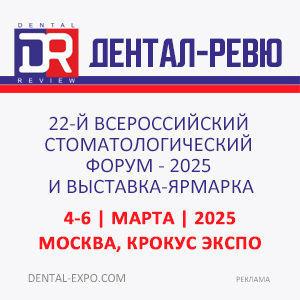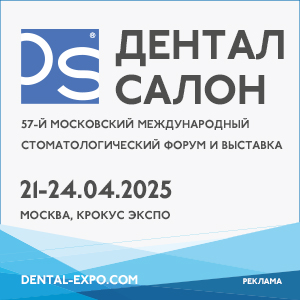DOI:
10.37988/1811-153X_2024_2_83Structural and functional changes of salivary glands in patients after iodine-131 radiotherapy in the complex treatment of thyroid diseases
Downloads
Abstract
Radiotherapy is one of the most important elements of the combined treatment of thyroid diseases, it is used depending on the degree of postoperative risk of recurrence of the disease and in the case of distant metastases. The side effect of radioiodine therapy on the salivary glands may occur in the early and late periods. Despite the many works devoted to sialoadenitis after radioiodine therapy, there is currently no clear characteristic of radio-induced sialoadenitis and a standard of diagnosis.Materials and methods.
The frequency of structural and functional disorders of the salivary glands was studied in 45 patients with thyroid diseases treated with iodine-131. Basic, private and special methods of examination of the salivary glands were used.
Results.
The most frequent clinical manifestation of salivary gland involvement, periodic enlargement, was detected on both sides in 38% of patients, in 53% — on the one hand. Simultaneous damage to the parotid and submandibular salivary glands was found in 9% of patients. Parotid salivary glands (85% of cases) are more sensitive to the development of postradiative sialoadenitis than submandibular glands (15% of cases).
Conclusion.
In most cases, the structural and functional consistency of the salivary glands is determined. Irreversible changes develop mainly in one salivary gland. There is a connection between the lack of secretion from the excretory duct and the lack of contrast between the intragastric ducts.
Key words:
sialoadenitis, sialoscintigraphy, radioiodine therapy, thyroid diseasesFor Citation
[1]
Dubrovina E.I., Gayduk I.V., Panin A.M., Tsitsiashvili A.M., Oganesyan A.Kh. Structural and functional changes of salivary glands in patients after iodine-131 radiotherapy in the complex treatment of thyroid diseases. Clinical Dentistry (Russia). 2024; 27 (2): 83—89. DOI: 10.37988/1811-153X_2024_2_83
References
- Borodavina E.V., Krylov V.V., Isaev P.A., Shurinov A.Yu., Rodichev A.A. Historical aspects and modern concepts in the treatment of patients with differentiated thyroid cancer, refractory to radioactive iodine therapy. Head and neck tumors. 2021; 4: 119—130 (In Russian). eLIBRARY ID: 47959683
- Upadhyaya A., Meng Z., Wang P., Zhang G., Jia Q., Tan J., Li X., Hu T., Liu N., Zhou P., Wang S., Liu X., Wang H., Zhang C., Zhao F., Yan Z. Effects of first radioiodine ablation on functions of salivary glands in patients with differentiated thyroid cancer. Medicine (Baltimore). 2017; 96 (25): e7164. PMID: 28640094
- Owosho A.A., Thor M., Oh J.H., Riaz N., Tsai C.J., Rosenberg H., Varthis S., Yom S.H., Huryn J.M., Lee N.Y., Deasy J.O., Estilo C.L. The role of parotid gland irradiation in the development of severe hyposalivation (xerostomia) after intensity-modulated radiation therapy for head and neck cancer: Temporal patterns, risk factors, and testing the QUANTEC guidelines. J Craniomaxillofac Surg. 2017; 45 (4): 595—600. PMID: 28256385
- Van Nostrand D. Sialoadenitis secondary to ¹³¹I therapy for well-differentiated thyroid cancer. Oral Dis. 2011; 17 (2): 154—61. PMID: 21029259
- Kovalenko V.A., Kopchak A.V., Kovalenko A.E. Postradial sialozoadenitis in patients with papillary carcinoma of the thyroid gland. Grekov’s Bulletin of Surgery. 2015; 1: 75—77 (In Russian). eLIBRARY ID: 22943124
- Nahlieli O., Nazarian Y. Sialadenitis following radioiodine therapy a new diagnostic and treatment modality. Oral Dis. 2006; 12 (5): 476—9. PMID: 16910918
- Yaremenko A.I., Kutukova S.I., Razumova A.Ya., Bajkalova P.M. Chronic sialoadenitis which occur as a complication of radioiodine therapy. The Dental Institute. 2018; 1 (78): 54—55 (In Russian). eLIBRARY ID: 34964788
- Jeong S.Y., Kim H.W., Lee S.W., Ahn B.C., Lee J. Salivary gland function 5 years after radioactive iodine ablation in patients with differentiated thyroid cancer: direct comparison of pre- and postablation scintigraphies and their relation to xerostomia symptoms. Thyroid. 2013; 23 (5): 609—16. PMID: 23153322
- Panin A.M. Surgical dentistry. Inflammatory and dystrophic diseases of the salivary glands: a textbook. Moscow: Litterra, 2011. Pp. 17—41, 17 (In Russian). eLIBRARY ID: 19560147
- Malanchuk V.A., Kopchak A.V., Kovalenko V.A. Clinical manifestations of salivary gland dysfunction of patients who received radioactive iodine therapy with papillary thyroid carcinoma. Bulletin of Dentistry. 2013; 1 (82): 61—65 (In Russian). eLIBRARY ID: 24307969
- Bichev R.O., Gayduk I.V., Panin A.M., Mkrtumyan A.M., Vartanyan K.F., Kirienko S.L., Mirzoyants S.G. Sialadenitis during therapy with radioactive iodine-131. (Review of the literature. A case report). Russian Stomatology. 2015; 4: 19—24 (In Russian). eLIBRARY ID: 25594577
Downloads
Received
December 15, 2023
Accepted
May 20, 2024
Published on
June 28, 2024











